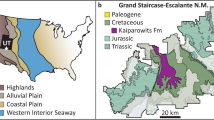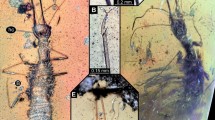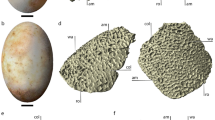Abstract
IN giving our opinion that ‘Dictyocotyle’ is simply a cœlomic form of Calicotyle we were well aware of some apparent structural differences between the two forms. Indeed, some of the supposedly distinctive characters had been detailed1,2. Perhaps the most obvious difference is one of size; Calicotyle rarely exceeds 5 mm. in length, but ‘Dictyocotyle’ may exceed 11 mm. It is not surprising, therefore, that the eggs of the cœlomic form should also be larger. However, the difference is not great, even in the imperfect state of our knowledge. One of us gave the size of the egg of the cœlomic form as 186µ × 100µ, with a filament 19µ long2; Hunter and Kille3, who found many eggs but did not give the size-range, provided the figures 215µ × 100µ (+ 50µ for the filament). In the places cited by Llewellyn, for Calicotyle, comparative figures are 100µ × 110µ (+ 35µ for the filament)4 and 100–110µ (+ 100–130µ for the filament)5. As regards shape, which defies description and must be greatly influenced by fixation, the eggs of the cœlomic form were said to be “pyriform”2, “roughly spindle shaped, and triangular in cross section”3, while those of Calicotyle were described as “triangular in optical section”4, and “tétraédriques” (“deux côtés du tétraèdre sont parcourus par une lame mince formant une carène”)5. The “three-sided pyramidal” eggs of C. affinis measure 145µ × 104µ (+ filament 52µ long) (no range given)6. Incidentally, the “carène” mentioned by Euzet is indicated in photographs of the eggs of ‘Dictyocotyle’3. Presumably the cœlomic form has a larger egg because of the greater size of the ootype, but we do not believe that significant differences in shape of the internal cavity of this organ, which acts as a mould in which the egg is formed, can be demonstrated for the cœlomic and cloacal forms in preserved whole mounts. As regards the cuticularized penis, the length is difficult to measure and may be less in forms acceptable to all as C. kroyeri than in ‘Dictyocotyle’, but it definitely is not less in ‘C. affinis’, where it likewise consists of three or more large turns of a spiral. Brinkmann6 is of the opinion that ‘C. affinis’ is a valid species (which is not proved beyond dispute) and a parasite of Chimaera which may wander from the cloaca into the rectum, but he found it also in the cloaca of Raia fullonica, in which location and host he also found C. kroyeri.
This is a preview of subscription content, access via your institution
Access options
Subscribe to this journal
Receive 51 print issues and online access
$199.00 per year
only $3.90 per issue
Buy this article
- Purchase on Springer Link
- Instant access to full article PDF
Prices may be subject to local taxes which are calculated during checkout
Similar content being viewed by others
References
Dawes, Ben, “The Trematoda” (Cambridge Univ. Press, 1946, 1956).
Dawes, Ben, Nature, 161, 642 (1948).
Hunter, G. C., and Kille, R. A., J. Helminth., 24, 15 (1950).
Dawes, Ben, “The Trematoda of British Fishes” (The Ray Society, London, 1947).
Euzet, L., Ann. Parasit. Hum. et Comp., 32, 197 (1957).
Brinkmann, A., Univ. Bergen Årb. naturv. R., No. 1 (1952).
Author information
Authors and Affiliations
Rights and permissions
About this article
Cite this article
DAWES, B., GRIFFITHS, I. Relationship between Dictyocotyle and Calicotyle . Nature 183, 835–836 (1959). https://doi.org/10.1038/183835b0
Issue Date:
DOI: https://doi.org/10.1038/183835b0
Comments
By submitting a comment you agree to abide by our Terms and Community Guidelines. If you find something abusive or that does not comply with our terms or guidelines please flag it as inappropriate.



